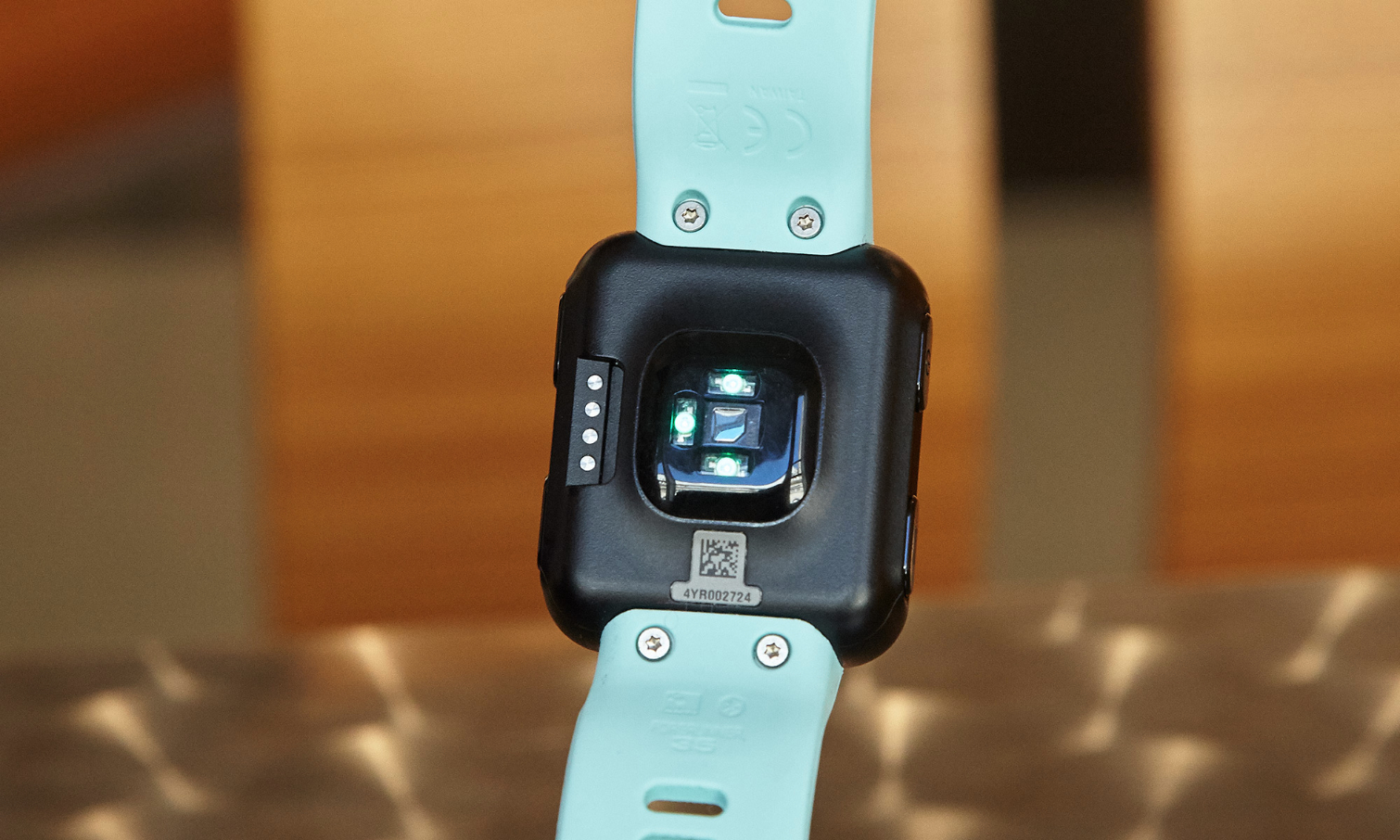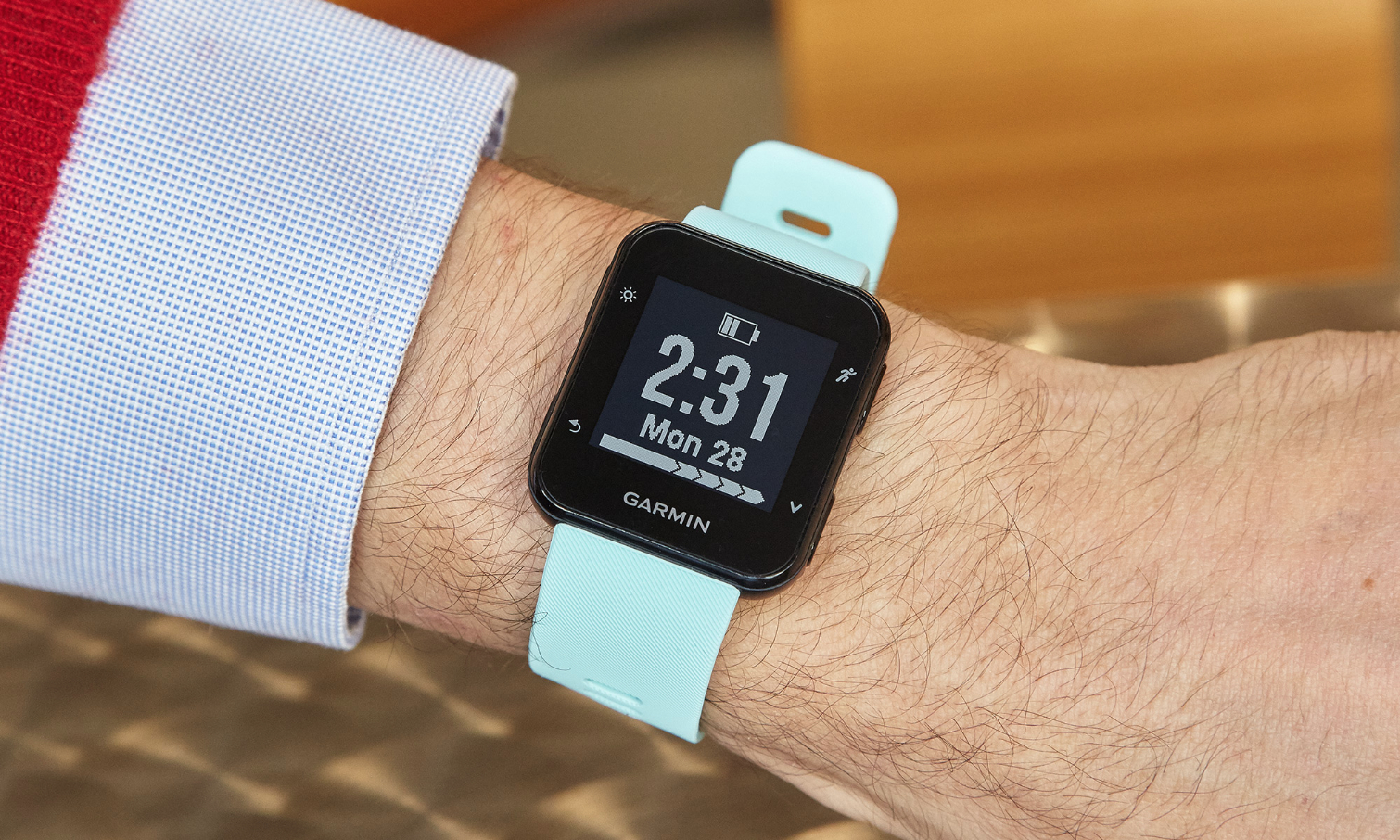Tom's Guide Verdict
The Garmin Forerunner 35 is a good all-around GPS running watch that won't break the bank.
Pros
- +
Affordable
- +
Bright display
- +
Smartphone notifications
Cons
- -
Limited fitness tracking
- -
Slow heart rate monitor
Why you can trust Tom's Guide
Garmin has a wide range of GPS watches for runners and cyclists, from the $99 Forerunner 25 to the $599 fenix 3 Sapphire. One of its newest watches, the $199 Forerunner 35, falls somewhere in between, both in price and features. This GPS watch has a built-in heart rate monitor, acts as an all-day activity tracker, and even provides some smartphone notifications. And while it does all these things well, it doesn't excel at any one ― which is unfortunate considering its price.
Design
While many of Garmin's GPS watches are circular, the Forerunner 35 looks more like an Apple Watch, for better or worse. Its flat-faced, squarish design sets it apart from the rest of Garmin's lineup, which either look sporty (the Forerunner 235) or more like a traditional watch (the vivomove). It's a safe, middle ground between the two that I felt looked bland, but wouldn’t look out of place in a variety of situations.

On the right of the watch are two buttons: one for starting and selecting a workout, and one for moving through menu items. The left side has a button for turning on the backlight, and a Back button.
I found the Forerunner's 35's 0.93-inch, 128 x 128-pixel display easy to read in any condition. It's a lot brighter and crisper than the $149 Polar M200, a GPS watch that also has a heart rate monitor and smartphone notifications. It even seemed a bit brighter than the TomTom Spark 3, though the two were pretty evenly matched.

Navigating through menus with only a down-arrow button proved more time-consuming than I'd like. Too often, I would press the Start Workout button, thinking it would move me back up a list, only to select an item by mistake. Also, scrolling through long menus was tedious, especially when I scrolled past the item I wanted, and had to scroll all the way through the list again.
Like the TomTom Spark 3, the Forerunner 35 is water-resistant to 5 ATM (130 feet) ― it'll survive some splashes and swimming, but don't take it scuba diving. You can get the Forerunner 35 with a black, light blue, lime green or white band. The bands are replaceable, but you’ll need a screwdriver.
MORE: Best Fitness Trackers
Get instant access to breaking news, the hottest reviews, great deals and helpful tips.
Performance
The types of activities the Forerunner 35 can track are limited to Cardio: walk, run outdoor, run indoor and bike. That's not as comprehensive as the TomTom Spark 3 Cardio, which can also track swimming.
The Forerunner 35's GPS took slightly longer than more expensive GPS watches to acquire a signal, but I usually didn't have to wait more than about 2 minutes ― enough time to get some stretching in. During my runs, the Forerunner 35 was accurate, precisely charting my route.

I found the Forerunner 35's heart rate monitor a bit slow. A few times on runs, my heart rate would be stuck around 150-160 beats per minute, then suddenly jump up to 170 or higher for the remainder of my run. This wasn't because I was sprinting, either; I maintained a steady pace throughout my run.
While it isn't as customizable as Garmin's more expensive devices, which let you add watch faces and other apps, the Forerunner 35 does receive notifications from your smartwatch. I could read texts and see who was calling, and, as a plus, reject the call from the watch itself. Limited as they were, it was handy to get all this information right on my wrist.

For the lazy types, the Forerunner 35 has a Move alert, which will buzz your wrist if you've been sitting too long. A Move bar at the bottom of the screen grows in length the longer you've been sitting, and only a good 5-minute walk will clear it.
Battery Life
Garmin estimates that the Forerunner 35 will last up to nine days in watch mode and up to 13 hours in training mode. I wore the watch for a full week, going on three runs using GPS for about 45 minutes each time; at the end of the week, the battery was half full. The Forerunner comes with a small clip-on USB charging cable, which was not only easy to carry, but stayed on the watch securely.
MORE: Fitness Tracker Buying Guide
Bottom Line
The Garmin Forerunner 35 is a good, but unexceptional, running watch. It has a safe design, connects fairly quickly to GPS satellites, and lasts a while on a charge. However, if you want a GPS watch with more features, I would suggest spending an extra $30 for the TomTom Spark 3 Cardio + Music. The TomTom Spark 3 allows you to stream music from the watch to your headphones, for example. And it doesn't cost much more. However, if money is a consideration, you'll find more value from the Polar M200, which doesn't have as bright a display, but gives you many of the same features for $50 less.

Michael A. Prospero is the U.S. Editor-in-Chief for Tom’s Guide. He oversees all evergreen content and oversees the Homes, Smart Home, and Fitness/Wearables categories for the site. In his spare time, he also tests out the latest drones, electric scooters, and smart home gadgets, such as video doorbells. Before his tenure at Tom's Guide, he was the Reviews Editor for Laptop Magazine, a reporter at Fast Company, the Times of Trenton, and, many eons back, an intern at George magazine. He received his undergraduate degree from Boston College, where he worked on the campus newspaper The Heights, and then attended the Columbia University school of Journalism. When he’s not testing out the latest running watch, electric scooter, or skiing or training for a marathon, he’s probably using the latest sous vide machine, smoker, or pizza oven, to the delight — or chagrin — of his family.

